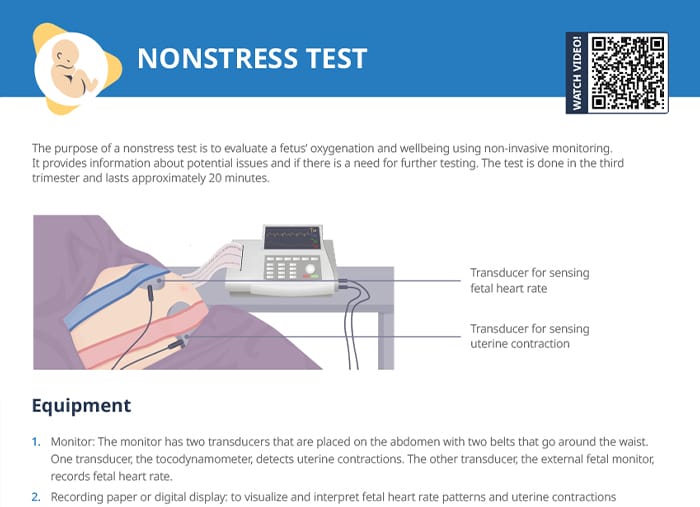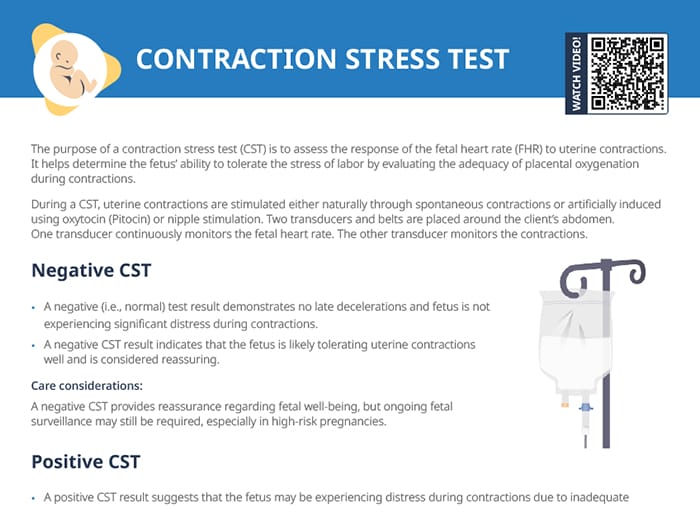What is a contraction stress test: goals and procedure
Goal of the test
A contraction stress test helps gauge how well the fetus is going to tolerate the stress of labor by assessing how the fetal heart rate responds to uterine contractions.
Procedure
During the test, uterine contractions are stimulated in one of 2 ways:
- Naturally through spontaneous contractions
- Artificially induced using oxytocin (Pitocin) or nipple stimulation
With either method, the goal is to achieve three contractions within 10 minutes to mimic labor.
Two transducers and belts are placed around the client’s abdomen. One transducer continuously monitors the fetal heart rate. The other transducer monitors the contractions.
When monitoring the fetal heart rate, the following are expected or unexpected:
- Early decelerations are unproblematic (negative stress test).
- Late or variable decelerations are warning signs as they are indications of stress (positive stress test).
Contraction stress test vs non-stress test
The contraction stress test looks for the a fetal response to stress (contractions), while a non-stress test checks for the ability of the fetus’ movements and heart rate to react to changes. Therefore, the outcome of a contraction stress test should ideally be negative, since the fetus should handle stress without showing warning signs, while the ideal outcome of a non-stress test is positive, since the fetus should be able to react.
Tip: For contraction stress tests, a negative result is a good thing, and a positive result is reason for concern.
Related videos
Positive contraction stress test interpretation
A positive result is defined as late decelerations following >= 50% of contractions. This is caused by uterine placental insufficiency leading to insufficient blood flow between the uterus and the placenta. It indicates that the fetus has shown signs of stress under the contractions.
A positive test result requires further assessment to determine the appropriate management strategy. Interventions such as close monitoring or expedited delivery may be warranted.
Example:
- First, check if the test is set up correctly. Are there three contractions in 10 minutes? In the bottom graph in the picture, note the contractions in the correct time intervals.
- Then, check if the fetal heart rate is within normal limits by looking at the top graph. The baseline is at about 150, so this is acceptable, as well.
- Check for decelerations in the heart rate. Are they early or late?
- Early decelerations would mean the deceleration and the apex of the contraction happen at the same time.
- In the example here, the deceleration is happening after the contraction, making it a late deceleration and therefore a positive result for the contraction stress test.
Negative contraction stress test interpretation
A negative contraction stress test is the normal outcome that has no warning signs or causes for concern. While reassuring regarding fetal wellbeing, ongoing fetal surveillance may still be required especially for high-risk pregnancies.
A negative test result is defined as the fetal heart rate showing no late decelerations or significant variable decelerations during the simulated labor. The image below shows no late or variable decelerations.

